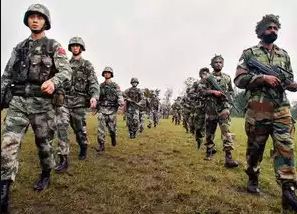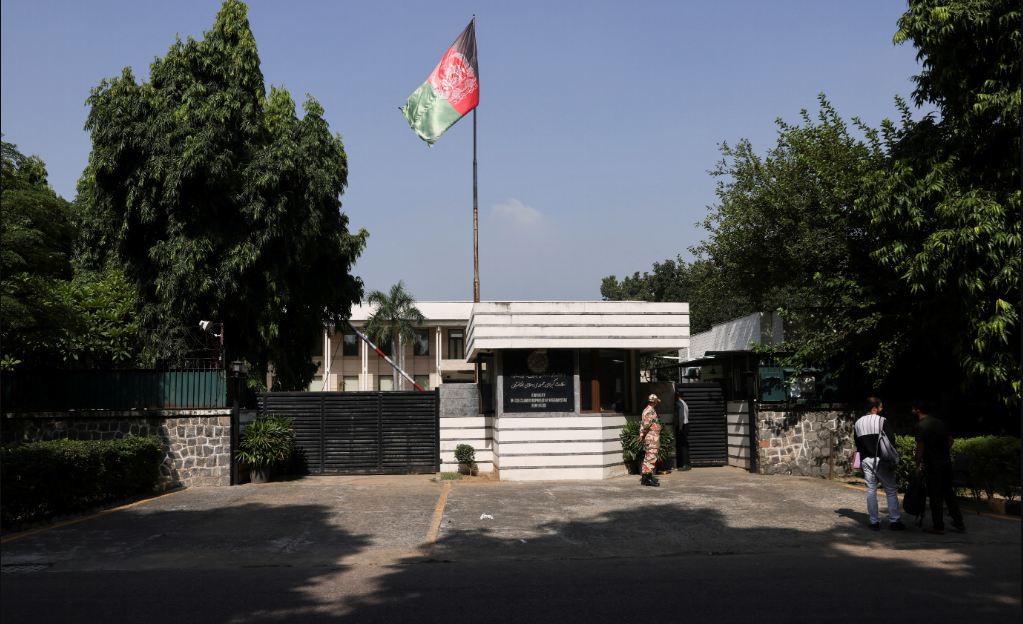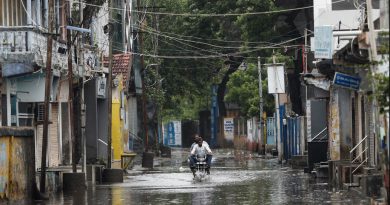Report: The United States must provide full support to India in the event of a conflict with China
Washington – The US must compare China’s assertiveness towards other allies and partners to India’s territorial dispute with China, denounce China’s “efforts at land-grabbing” in all multilateral forums, including the United Nations, offer India cutting-edge military technology, start co-production and co-development of equipment, help India build up its military and naval capacity, and be ready to stand by India fully in the event of another border conflict.
The report, titled “India-China Border Tensions and US Strategy in the Indo-Pacific,” was released by the Centre for a New American Security (CNAS) on Thursday. It makes the case that the 2020 crisis has placed China in an advantageous position to project power, while India is still on the defensive. The report’s authors are Derek Grossman, a senior analyst at Rand Corporation who previously worked for the Central Intelligence Agency, the National Security Agency, and the Defense Intelligence Agency, and Lisa Curtis, who served as the senior director for South Asia in the National Security Council under Donald Trump and directly dealt with India during the 2020 crisis in that capacity.
Its other policy recommendations to the US government include conducting joint intelligence reviews with India to evaluate Chinese intentions along the Line of Actual Control (LAC) and improve contingency planning in case of another conflict; creating or supporting an unofficial organisation that compiles and disseminates unclassified commercial satellite imagery on PLA positions at the LAC; and signalling to Pakistan — both directly and through other partners.
The 32-page report provides a history of the India-China border conflict, a look ahead to the 2020 impasse, details China’s repeated breaches of prior accords, and analyses the military balance of power in the region. When India and China are at odds, it also considers Pakistan’s potential involvement in starting a second front or adopting non-violent action. It also carefully considers what India may want of the US and what Washington can provide in the way of support.
Senator Jeff Merkley, who co-sponsored a resolution in the Senate last month denouncing Chinese aggression across the border and praising India’s response, gave the keynote address to commemorate the report’s release. He said Beijing was always determining how far they could push along the LAC.He made reference to the conflict that occurred in Arunachal Pradesh in December 2022 and claimed that India retaliated as a result of “actionable intelligence” provided by the US. This was a confirmation of a US media report that had been published last week and had first revealed bilateral intelligence cooperation in the lead-up to the conflict. Merkley maintained his support for India in the conflict with China while expressing his desire for India to speak out more forcefully against Russian aggression in Ukraine and join the international sanctions against Moscow.
from an Chinese perspective
Although there are many possibilities, the paper concedes that there are no conclusive, empirically supported explanations for why China acted as it did in 2020. But, it primarily blames China’s increased assertiveness towards India during the past 15 years on that country’s expanding economic and military power.
Regardless of intent, the research claims that due to Chinese activities and subsequent Indian countermeasures, the current border agreements are no longer relevant and up to date.
The report details China’s military activities along the LAC, including the creation of the Western Theatre Command, an increase in troop presence along the LAC, the bolstering of integrated air and missile defence systems, a significant expansion of infrastructure, including roads in sensitive areas and the widening of air steps, and the building of large structures.
Although the writers also look at India’s actions along the LAC, they come to the conclusion that China is in a better position. “Beijing has expanded its territory by strengthening its military presence in the Aksai Chin… 2020 saw the addition of brief tent camps to the border’s small Chinese outposts, which subsequently developed into long-term barracks with cold-weather shelters. Prior to 2020, China’s presence in the Depsang Plains was purely observational; nevertheless, this area is currently home to infantry shelters, ammunition storage facilities, tanks, and artillery systems.
The article claims that China has built “huge military bases adjacent to modern roads” for convenient resupply near to the border, even in regions where forces have been disengaged, like the Galwan and Hot Springs. Along with extending them along the border with Akhai Chin, China has also done so over the Tibetan plateau.
“China has effectively increased its power projection along its disputed border with India, while India is now on the back foot to reassert its territorial claims and stop further deterioration of its position in the Ladakh region, even as it faces territorial threats from China in the eastern sector of their disputed borders in the Indian state of Arunachal Pradesh.”
from an Indian perspective
The 2020 crisis, which the report refers to as a “inflection point,” has made New Delhi more open to bilateral and multilateral cooperation through Quad, and it has decreased India’s interest in having “dual-track relations” with China, which involve “building stronger economic and diplomatic ties while downplaying military tensions at the border.”
Even though “their strategies for dealing with the challenge differ in several respects,” the LAC developments have also increased convergence between India’s and the US’s perspectives on the China challenge, such as on including defense-related components in Quad or criticising China on Taiwan or Xinjiang.
Nonetheless, the research provides a nuanced view of what India might expect from the US in the case of a new crisis. According to the report, Delhi would expect winter clothing and intelligence support, but it may also ask for joint drills, urgent senior-level military and defence consultations, and the inclusion of the need to defend Indian border claims in Quad statements in order to increase its deterrence against Beijing.
India needs to demonstrate to its people that it is capable of managing military operations properly and competently, even in a time of war. India might also think that joint statements with the US that cast the border problem in the context of US-China rivalry could be viewed as counterproductive. Indian leaders would prefer to avoid the appearance of being dependent on Washington to handle the border dispute with China as their nation grows more self-assured as an emerging power.
All of this shows that the US government is in a difficult position, having to “do something, but not too much,” to help New Delhi. However it is apparent that US policy on this matter matters and, if managed correctly, can aid in discouraging future Chinese incremental land grabs—or “salami slicing”—of India’s boundaries, according to the research.
from an American perspective
According to the report, up until recently, American officials in charge of South Asia had mainly focused on preparing for a potential India-Pakistan conflict, but they needed to pay more attention to a potential military crisis between India and China because of the implications for the Indo-Pacific region and the fact that both countries are nuclear powers.
According to Curtis and Grossman, the hardening Indian stance towards China may help pave the way for an American “deterrence by denial” approach, in which more security assistance is given to prevent China from succeeding by increasing the costs involved. A second method to assist India is by assuring it has advanced intelligence, surveillance, and reconnaissance capabilities, or “deterrence by detection.”
According to the research, US backing for India at a time when China is asserting itself will also assist convey to other Asian nations that fortifying security relations with Washington rather than appeasing Beijing is a more effective strategy to protect sovereignty.
“The United States should provide diplomatic and military support to New Delhi, but without making a big deal out of it. Without attempting to arbitrate the crisis, Washington should come up with innovative measures to strengthen India’s position. Washington cannot afford to entirely ignore this issue or wait until it flares up because of the ramifications for its larger Indo-Pacific policy.
Future prospects
The report has a negative outlook for the future. According to the report, the likelihood of ongoing standoffs turning into major war is still quite high because both China and India are “improving infrastructure, revising their rules of engagement since 2020, and introducing new and advanced weaponry systems on their sides of the disputed boundary.”
However, there are still few chances for negotiations to result in a political resolution of boundary disputes, particularly as China has shown “no interest in clarifying the LAC through an exchange of maps, as India has requested.” Chinese opposition to the map-exchange procedure is most likely a result of territorial uncertainty, which encourages inflated claims and helps retain military advantages.
In light of this, the report praises India for its persistence, composure, and attempts to reach diplomatic agreements, while firmly blaming China for “upping the ante” through its infrastructure development, military deployments, and encroachment into land that India regards as its own.


